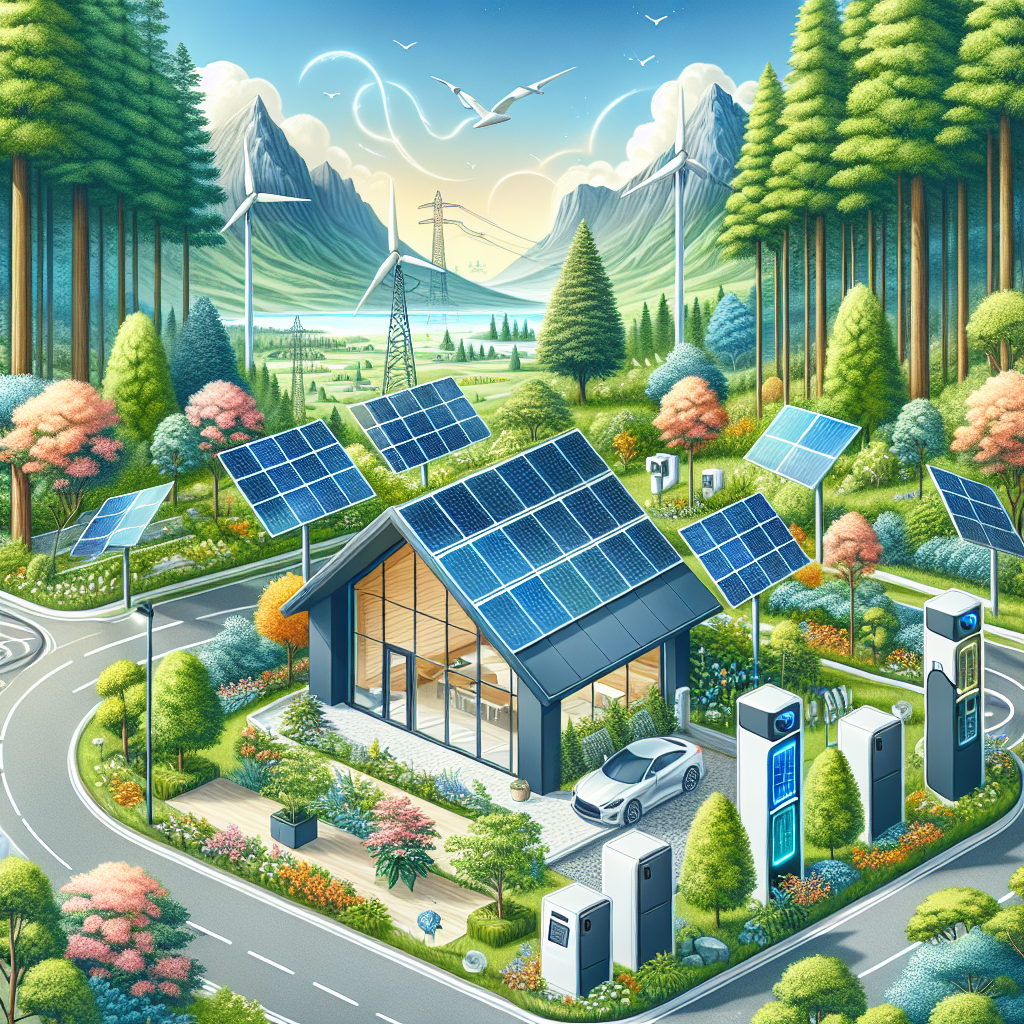In today’s world, the push for renewable energy and electrification is more critical than ever. As we face the growing challenges of climate change and environmental degradation, harnessing renewable energy sources like solar and geothermal energy becomes a vital component of our global strategy. These technologies are not only crucial for reducing carbon emissions but also for ensuring a sustainable energy future. This article delves into the latest innovations in renewable energy, particularly solar and geothermal, and explores their role in our decarbonization efforts.
The Significance of Renewable Energy
Renewable energy sources such as solar, wind, and geothermal are pivotal in our efforts to mitigate climate change. Unlike fossil fuels, which release substantial greenhouse gases when burned, renewable energy sources produce minimal or no emissions. This shift is essential for reducing our carbon footprint and ensuring the longevity of our planet’s natural resources.
Solar Energy: Capturing the Sun’s Power
Solar energy stands out as one of the most promising and rapidly advancing renewable energy sources. Over recent years, technological advancements have significantly improved the efficiency and affordability of solar power.
Cutting-Edge Solar Technologies
A groundbreaking development in solar technology is the use of tiny crystals known as perovskites. When added to traditional silicon-based solar panels, these crystals can boost the panels’ efficiency dramatically. While conventional panels have an efficiency rate of about 20%, perovskite-enhanced panels can reach efficiency rates exceeding 25%. This innovation could revolutionize the solar industry by making solar power more accessible and effective.

Moreover, integrating solar panels with advanced energy storage systems is becoming increasingly popular. By storing excess energy generated during sunny periods, these systems ensure a consistent power supply even when the sun isn’t shining. This capability enhances the reliability of solar energy, making it a more viable option for widespread use.
Solar Energy’s Role in Decarbonization
Solar power is a key player in reducing global carbon emissions. Replacing fossil fuel-based power plants with solar farms can cut down greenhouse gas emissions significantly. According to the International Energy Agency (IEA), solar energy has the potential to become the largest source of electricity by 2050, contributing to nearly one-third of global electricity production. This transition is essential for meeting the goals set out in the Paris Agreement, which aims to limit global temperature rise to below 2°C.
Geothermal Energy: Unlocking Earth’s Heat
Geothermal energy is another renewable energy source with tremendous potential. It involves tapping into the Earth’s natural heat to generate electricity and provide heating. Geothermal energy is reliable, available year-round, and emits very few greenhouse gases, making it a sustainable energy option.

Advanced Geothermal Systems
A significant advancement in geothermal technology is the development of Enhanced Geothermal Systems (EGS). Traditional geothermal energy relies on naturally occurring hot water reservoirs, which are limited to specific locations. EGS, however, creates artificial reservoirs by injecting water into hot, dry rocks deep underground. The water heats up from the rocks and is then extracted to generate electricity. This technology expands the potential for geothermal energy production to areas that were previously unsuitable.
Advantages of Geothermal Energy
Geothermal energy offers several advantages that make it a valuable part of the renewable energy landscape. It provides a constant and reliable power source, unlike solar and wind energy, which are intermittent. Geothermal plants also have a small land footprint compared to solar farms and wind turbines, making them suitable for densely populated or land-scarce areas. Additionally, geothermal energy can be used for direct heating applications, such as district heating systems, reducing the need for fossil fuels.
Electrification: A Key to Reducing Emissions
Beyond harnessing renewable energy sources, electrification plays a crucial role in reducing carbon emissions. Electrification involves replacing fossil fuel-dependent technologies and processes with electric alternatives powered by renewable energy. This approach is particularly impactful in sectors like transportation, heating, and industrial processes.
Electrifying Transportation
The transportation sector is one of the largest contributors to global carbon emissions. By transitioning to electric vehicles (EVs), we can significantly reduce these emissions. EVs produce zero tailpipe emissions and can be powered by renewable energy, offering a cleaner alternative to conventional gasoline and diesel vehicles.
The development of EV infrastructure, such as charging stations and advanced battery technology, is accelerating. Innovations like wireless charging and ultra-fast charging stations are making EVs more practical and convenient for everyday use.
Electrifying Heating and Industrial Processes
Heating and industrial processes account for a substantial portion of global energy consumption and carbon emissions. Electrifying these processes involves using electric heat pumps, induction heating, and other electric technologies instead of fossil fuel-based systems. For instance, heat pumps can efficiently provide heating and cooling for buildings, reducing the reliance on natural gas or oil-based systems

In the industrial sector, electric arc furnaces, electric boilers, and other electric equipment can replace traditional fossil fuel-based processes. This shift not only reduces carbon emissions but also improves energy efficiency and operational sustainability.
Conclusion
Renewable energy and electrification are at the heart of our global strategy to combat climate change. Advances in solar and geothermal energy, coupled with the electrification of transportation, heating, and industrial processes, are driving us towards a sustainable future. As technology continues to evolve, the potential for renewable energy to replace fossil fuels and significantly reduce carbon emissions becomes increasingly achievable.
By embracing these innovations and investing in renewable energy infrastructure, we can create a cleaner, greener, and more sustainable world for future generations. The transition to renewable energy is not just an environmental necessity but also an economic opportunity, fostering job creation, technological innovation, and energy security.





